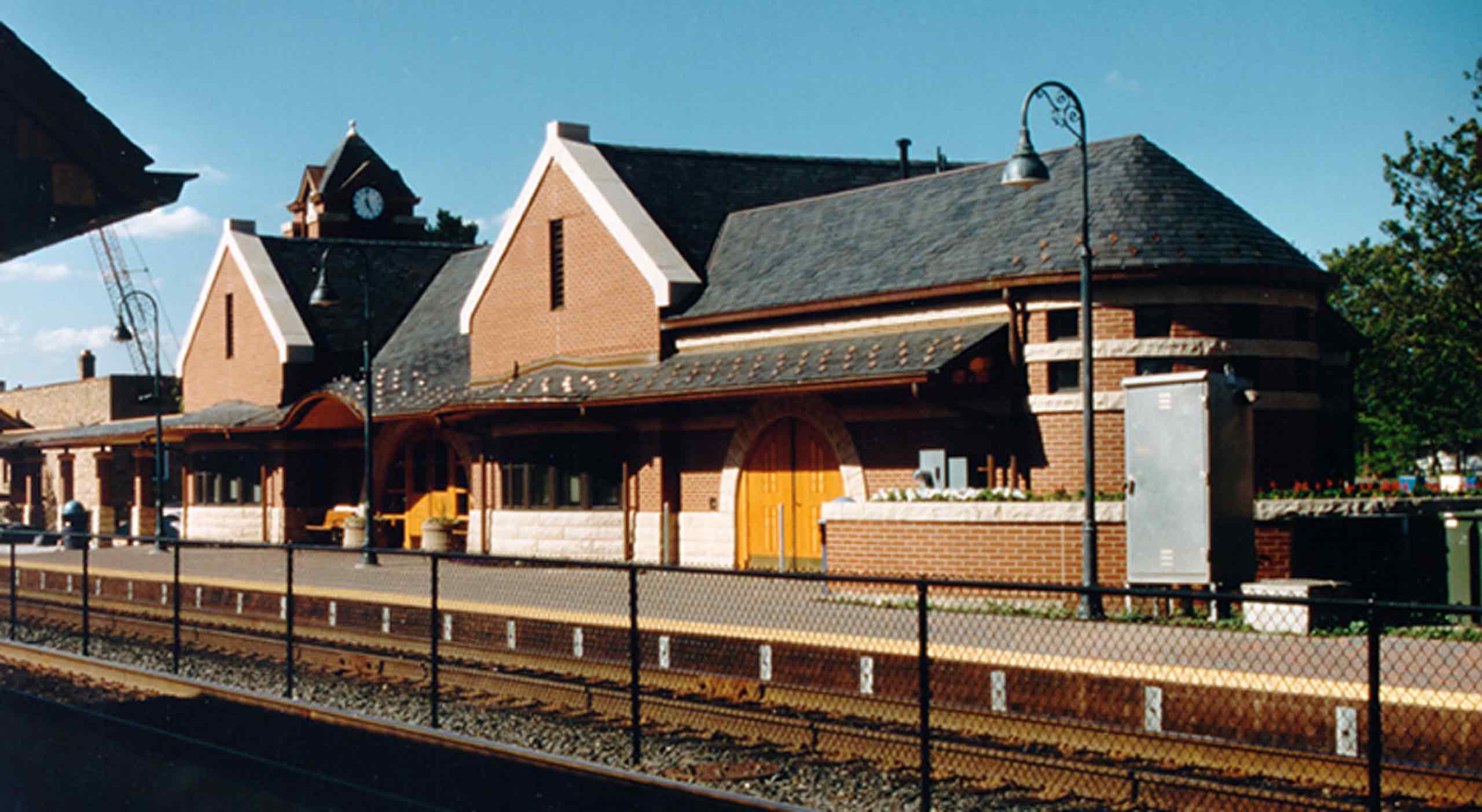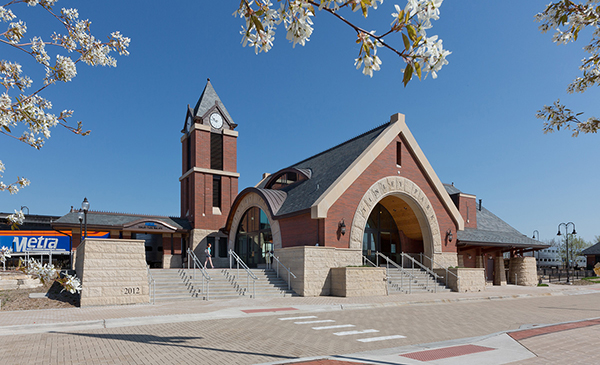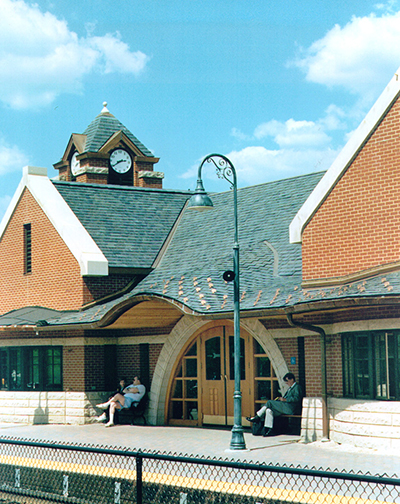
Strength and simplicity at the heart of monumental style inspired by 11th century European architecture
In the 19th century, renowned American architect Henry Hobson Richardson developed a style influenced by the Romanesque architecture of 11th century Europe. The Richardsonian Romanesque style created a strong civic impression for facilities that play an important public role. Examples include train stations, governmental facilities, and churches.


Richardsonian Romanesque buildings typically feature heavy, bold masonry masses and deep-cut windows. Towers create a civic marker, while arches provide a welcoming entry. Limited detailing and rough, chiseled stone (i.e., rustication) give materials a natural feel.
One example is Metra’s Glenview, Illinois train station, designed by Legat Architects and completed in 1995. Red masonry energizes the facility, while stone strengthens the station’s base and forms an arch that defines the main entry. Recessed windows accentuate the masonry and an unadorned clock tower stands guard as a civic protector and a gesture to nature.
In the 24 years since its completion, the Glenview station has inspired the aesthetics of many surrounding developments.
Richardsonian Romanesque Design Vocabulary
- Limited detailing
- Rough, natural materials
- Rounded arches
- Recessed windows and entries
- Towers
- Rich rustication
- Solid monumentality
Contact us to learn more about architectural styles or train station design, or read Ted’s other posts about transportation facilities:
- American Colonial Architecture
- A Lesson in Design Vocabularies
- Accessibility: Making the Grade with Universal Design
- Tough and Timeless Materials
- An Activity Node
- Safety Above All Else
- A Community Model


